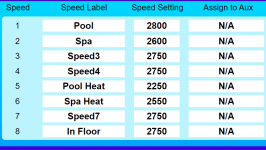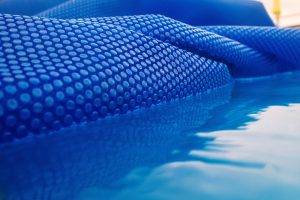We upgraded to a variable speed pump and replaced our filter this winter. Since then, we've had a huge amount of dirt build up on the walls of our pool, spa, and troft. Filter was cleaned a couple of weeks ago, but that hasn't made a difference. Right now I'm brushing by hand and running our Dolphin in wall cleaning mode a couple times a week and that mostly keeps me in front of it. This issue is new this season - never an issue last year. Pump is set for 600 min, 3450 max, 2500 priming with :03 prime duration. Any ideas whether there's something in the new setup that's causing this?
Other speed settings are:
Other speed settings are:



 Though, wouldn't high copper act as an algaecide in this case?
Though, wouldn't high copper act as an algaecide in this case? 
